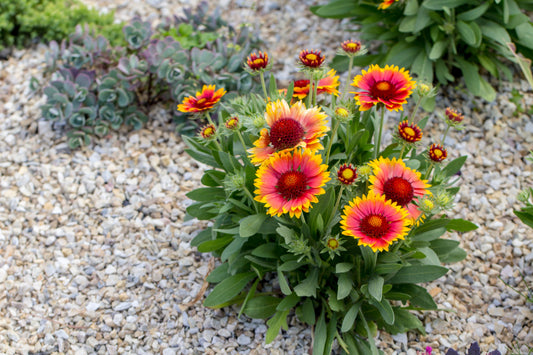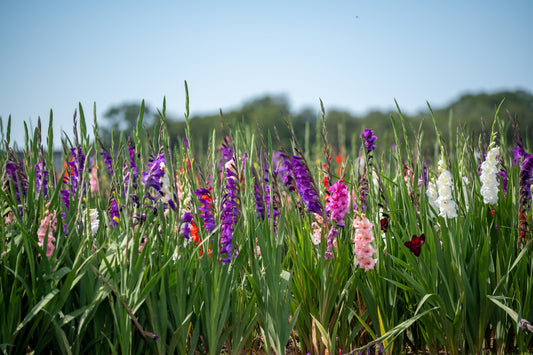Anemone Planting & Growing Guide
Planting Guide Information
-
3"Planting Depth
-
3-4" ApartPlanting Proximity
-
Fall or SpringPlanting Season
-
Anemones come in many forms and colors that are perfect for cut flower gardens.Plant Benefits
-
ModerateWater Quantity
-
Early to mid-SpringBloom Season
-
Full to Partial SunSunlight Quantity
-
Varies/Species Dependent. Zones 4-8 (Blanda Anemones); Zones 8-10 (Italian Anemones)Hardiness Zones
Additional Growing Information
Where to Plant
While Anemones aren't fussy about soil, they will perform best when planted in well-draining containers or garden areas. Spring bloomers are happy in partial shade, while fall bloomers prefer partial shade to full sun. The best zones to grow Anemones varies depending on the variety, so make sure you choose one that's well-suited to your growing area.
When to Plant
Choose your planting time based on the specific flowering cycle of your chosen variety. For example, spring-blooming types should be planted in the fall. For these varieties, roots will form in the autumn, and in warmer climates, some foliage may also develop at this time, with buds and flowers appearing in the spring. If you're in a colder region, it's wise to plant a fall-blooming variety in the spring when the danger of frost has passed. While container-grown Anemones can be planted anytime during the growing season, they will do best when planted in the spring.
How to Plant
- Choose a location where the soil drains well and your Anemones will receive full to half-day sun. If water puddles remain 5–6 hours after a hard rain in your outdoor planting spot, scout out another site or amend the soil with organic material to improve the drainage.
- Soak the bulbs for a few hours in lukewarm water to wake them up before planting and help them develop strong roots.
- Dig holes and plant your bulbs 3" deep and 3–4" apart. Pay no mind to which end is facing up as Anemones will grow regardless of their position.
- Fill containers, if using, with good quality, well-drained soil. Almost any commercially available potting medium will work fine.
- Water after planting to gently soak the soil and settle it around the bulbs.
How to Grow
- Water as needed during active growth periods. About 1" of water per week is a reasonable estimate.
- Add bone meal to the soil in the fall for spring bloomers or in the spring for fall bloomers for an additional boost of nutrition.
- Leave the foliage in place at the end of the blooming season rather than trim it off. The leaves will gather sunlight to create food through photosynthesis, strengthening the bulbs for the future. You can remove the foliage when the leaves turn yellow and die back as the plant slips into dormancy.
- Apply a layer of mulch, straw, or leaves around the plants to help protect them from winter elements.
Anemone Tips & Tricks
- Amend soil with organic material to raise the level 2–3" and improve drainage. Compost, ground bark, or composted manure all work a charm and are widely available.
- Ensure there are adequate drainage holes in your containers as Anemone bulbs must never sit in waterlogged soil.
- Snip a few flowers for bouquets or other cut arrangements while in bloom as this will not hurt your plants.
- Remove the foliage when blooming ends and the leaves turn yellow so the bulbs can rest for a few months until the next growing season.
Get Growing!
From the Family
-

Japanese Anemone - Tomentosa Robustissima
1 bare root AnemoneRegular price $6.95Regular priceUnit price per$7.95Sale price $6.9513% OffIn Stock -

Anemone - Blanda Pink Shades
20 Anemone bulbsRegular price $12.95Regular priceUnit price per -

Anemone - Blanda Flutter Mix
60 Anemone Blanda bulbs mixedRegular price $15.95Regular priceUnit price per$29.95Sale price $15.9547% OffIn Stock -

Anemone - St. Brigid Mix
60 Anemone bulbs mixedRegular price $15.95Regular priceUnit price per$32.95Sale price $15.9552% OffIn Stock







